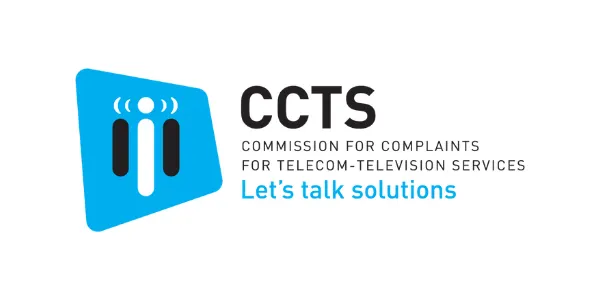
My phone bill unexpectedly included $300 in data roaming charges while I was travelling overseas. Can they do that?
The shock of a phone bill much larger than you expected can be stressful. If you’ve received an incorrect or unusually high phone bill, here are steps to dispute it.
What you should know
If you receive a surprisingly high phone bill, the first thing to do is look at the bill line by line. Have you bought extra services, dialled premium-rate numbers, or been hit with roaming charges?
Check with others in your household. Did they use your phone or piggyback on a shared plan to incur extra charges?
If this is your first bill, be aware that there are typically monthly add-on fees with any cellphone service. Each month a system access fee, a 911 service fee, and taxes will appear on your bill. You' ll also be charged for any minutes, texts or data you used over and above what your monthly plan covers. And your bill will include fees for options you used that are not included in the base price of your plan.
What are roaming charges?
Roaming charges may apply when you travel and use your cellphone outside your service provider’s network area. You may “roam” onto the network of another provider. This most often happens if you’re traveling outside Canada.
Roaming charges apply to voice calls, text messages, picture messages, and data you receive or send when you’re roaming. You can incur roaming charges simply by leaving your phone turned on while travelling outside your home network — some smartphone apps automatically send and receive data even if it doesn’t look like your phone is doing anything.
Roaming is generally not included in phone plans, and roaming rates are typically high. Most providers offer roaming packages or add-ons that you can buy before you travel.
Your provider must notify you when your device is roaming
Under the Wireless Code, a mandatory code of conduct for cellphone service providers, your provider must notify you, at no charge, when your device is roaming in another country. The provider must notify both the account holder and the device user.
The notice must clearly explain what voice, text and data charges you may incur while roaming. A generic text message that the provider sends to all of its customers is not sufficient notice of what your roaming fees will be.
Your provider must limit data roaming charges when they reach a cap
Your provider must limit data roaming charges when they reach $100 within a single billing period, unless you explicitly agree to pay additional charges.
If you are on a shared or family plan, only the account holder or someone they authorize can consent to any additional charges. The account holder is the person who is responsible in the contract for paying the bill. The account holder can authorize a device user to consent to additional charges.
If the provider sends a text message to a device user who is not authorized to consent to additional charges, asking for consent to continue incurring charges over the cap, that is not sufficient.
Any amount that you pay in data roaming fees, whether via a roaming add-on (before use) or via overage fees (after use), counts toward the cap.
The cap on roaming charges applies on a per-account basis
It doesn’t matter how many devices are associated with the account. For example, for a family account with four devices, the cap on data roaming charges is $100 for the account, not $400.
“We got our teen son a phone on our family plan. All was good at first, but then our monthly bill jumped by $200. The next month it was up $300. Then $600. It turns out that our provider was sending our son text messages asking if he wanted extra data (at an extra charge). Our son kept texting back 'yes.' But I was the one paying the bills! The provider was supposed to get my consent to any additional charges.”
– Steve, Vancouver, BC

Under the Wireless Code, your provider must limit data overage charges when they reach $50 within a single billing period, unless you explicitly agree to pay additional charges.
If you are on a shared or family plan, only the account holder or someone they authorize can consent to any additional charges. The account holder is the person who is responsible in the contract for paying the bill. The account holder can authorize a device user to consent to additional charges.
If the provider sends a text message to a device user who is not authorized to consent to additional charges, asking for consent to continue incurring charges over the cap, that is not sufficient.
If you’re the only person named on a phone bill, the service provider can pursue you for the full amount regardless of who else used the service (that is, other people you live with or are on a shared plan with you).
You can’t get your service provider to pursue someone who’s not named on the bill — you’ll have to get the money from them yourself.
If you’ve signed a joint contract with someone else, you’re both responsible for paying the bill, regardless of who’s used the service.
If a service provider is asking you for payment and your name is not on the bill, tell them that you’re not a named account holder and you’re not legally responsible for the bill.
If your phone was lost or stolen and someone else runs up a big bill on your phone, you’ll usually have to pay for the use of the phone up until when you notified your service provider that the phone was missing.
If you are planning to dispute your bill, your provider might charge you a late payment charge if you don’t pay the bill and your dispute is unsuccessful. Check the terms of your plan.
Consider paying part of your bill
One approach to consider if you plan to dispute a phone bill is to pay the part of the bill which is not in dispute. This will show goodwill on your part and make your provider less likely to impose a late payment charge.
Once your account is past due, if your account exceeds $50 or has been past due for more than two months, your provider can disconnect your service. In most cases your provider has to warn you in writing at least twice before disconnecting.
Work out the problem
If you have a problem with your phone bill, give your provider the first chance to solve the problem. Ask your provider to reduce your bill if you think your bill is wrong.
Talk to someone in authority, such as a manager. Be firm and businesslike, but polite. Calmly and accurately describe the problem and what you want the provider to do to solve it.
Request specifics about how and when something will be done. Get the other person's name in case you have to refer to this conversation later.
Write down any details of your complaint and keep it in your file. Make sure to date your notes.
If discussing the situation with the provider doesn’t resolve the problem, the next step is to send a complaint letter to them to dispute the bill.
You should include:
your name, address and contact number
your customer account or reference number
copies of the bill you dispute
why you dispute the bill — say which charges are not right
You can use our template letter to write to your service provider.
Send the letter to the service provider’s customer services department or the contact listed in any complaint procedure the provider has in place. See the back of your paper bill or the provider’s website for details on their procedure. If you want to be sure they receive your letter, send it by registered mail.
Keep a copy of your letter.
The Commission for Complaints for Telecom-television Services (CCTS) administers the Wireless Code and deals with consumer complaints about cellphone service, including billing issues.
You can file a complaint with CCTS. You must provide:
specific details of your complaint
the steps you’ve taken to resolve the complaint directly with your service provider including your provider’s response
what you believe to be a reasonable resolution to your complaint
Common questions
If you get a cellphone as part of a contract, you can’t be billed for wireless services that you can’t use while that device is in for repairs under its warranty.
The provider may lend you a cellphone while yours is in for repair. In this case:
you can’t be charged for the borrowed phone
you can still be charged for your regular service
The Wireless Code and its protections apply to some but not all work phone plans.
If the work plan is with a small business, the Code applies. To qualify as a small business, the monthly bill for all telecommunications services for the business must be less than $2,500 per month.
As well, the Code applies to work plans — regardless of the size of the business — where the employee is responsible for some or all of the charges related to the account. For example, the Code applies to a work plan where the employer pays the basic monthly payments but the employee is responsible for data overage or roaming charges.
If the employee is not responsible for any of the charges incurred under the work plan (and the work plan is not with a small business), the Wireless Code does not apply.
Who can help

Commission for Complaints for Telecom-television Services
CCTS deals with cellphone, TV and internet service complaints.
